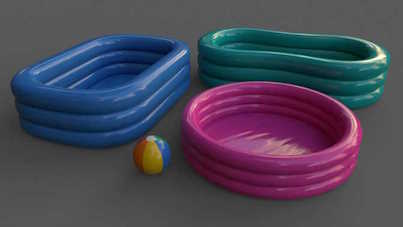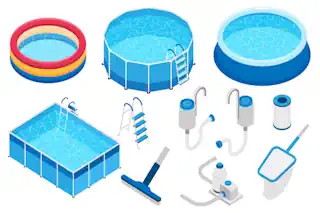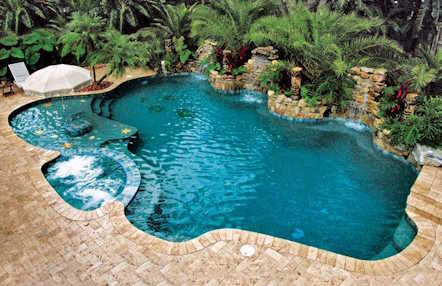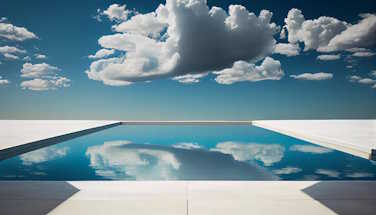The Sublime Intersection of Water and Architecture: A Deep-Dive into Architectural Swimming Pools

Imposing, elegant, and sometimes mind-bending—architectural swimming pools have become the new jewel in the crown of luxury homes and public spaces. When water meets visionary design ideas, the result is a spectacle that’s not only a reflection of architectural prowess but also a testament to human creativity. In this in-depth exploration, we’re plunging into the world of architectural swimming pools, a domain where design isn’t just about shape and function, but an art form that elevates space into an experience.
The Art of Designing Architectural Swimming Pools
An architectural pool is not just an amenity; it’s a statement piece that adds a unique dimension to any environment. Whether it’s a rooftop infinity pool that blurs the lines between horizon garden and high-rise or a subterranean cavern pool that’s a nod to the Earth’s natural springs, the design process is a delicate dance of form and concept.
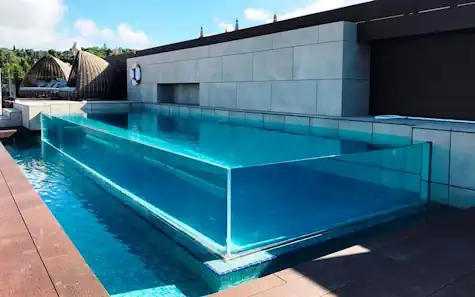
Key Elements of Design
Architectural swimming pools are sculpted water—conceived with a myriad of elements that break away from the traditional rectangle. Shapes flow in harmony with the design language of the surrounding space, creating curves and edges that provoke emotion and create serenity in equal measure. Size, too, is a crucial factor, with some pools spanning entire rooms or rooftops.
Material choices are as varied as the imagination of dream pool permits. Glass pools allow for a submerged theatre-like experience, while concrete and stone harken to classical design. Each material offers its own tactile and aesthetic qualities, playing a role in the pool’s functional life as well as its visual longevity.
Landscape Architecture Harmonization
Pools do not exist in isolation. They are part of a larger canvas that is defined by the landscape in which they sit. The interplay between the pool and its surroundings can be breathtaking—a game of contrasts or a dream of seamless integration, all underpinned by the principles of landscape architecture.
Examples Abroad
Across the globe, iconic pools have etched themselves into the cultural landscape, often becoming landmarks in their own right. The Marina Bay Sands Infinity Pool in Singapore offers a view to rival any city skyline, while the Lava Pool in the Blue Lagoon, Iceland, marries thermal waters with rugged geothermal architecture.
Meeting the Needs of Diverse Clientele
One size most certainly does not fit all in the realm of architectural swimming pools. Diverse clients bring varied tastes and lifestyles which necessitate a tailored approach to design and services.
Tailored to Perfection
A pool in a desert villa differs enormously from one in a coastal mansion. Different clients require different depths, features, and poolside amenities to suit their specific needs. Tailored designs are not just about preferences; they are designed to enhance the lives of those who use them.
Functionality Meets Form
The confluence of aesthetics and practicality is the hallmark of great architectural pool design. A balance is struck between a pool’s visual appeal and its everyday usability. Features like integrated spas, swim-up bars, and themed elements add to the experiential value, making each pool an individualized sanctuary.
Sustainability in Design
In a world increasingly conscious of our environmental footprint, sustainability has become a pillar in modern design. Energy-efficient heating and filtration systems, as well as water-saving features, are not afterthoughts but integral design components in architectural pool projects.
The Process: From Concept to Completion
The transformation from a concept sketched on paper to a shimmering pool is a process that requires meticulous planning, skilled execution, and a leap of faith from the client.
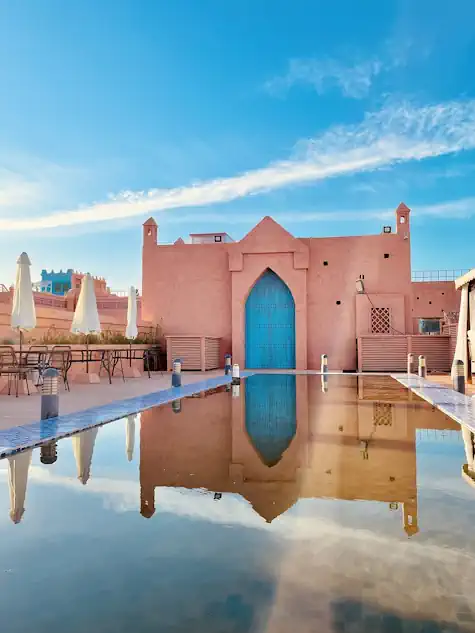
Design and Construction
The stages of design to construction involve architects, pool designers, landscape architects, and construction professionals working in unison. Each stage is a refined articulation of the initial vision, balancing engineering challenges with design integrity.
Collaboration is Key
The complexity of these projects makes collaboration a non-negotiable. Architects and pool designers must work together from the onset, ensuring the pool complements rather than competes with the house or building’s design.
Real-World Complexity and Timelines
No two pool projects are created the same. From navigating local regulations to managing construction delays, the real-world aspect of pool design is often complex. A project timeline gives a glimpse into the anticipated schedule, but unforeseen challenges can arise that test the resolve of all involved.
Showcasing Technology Innovation in Architectural Pools
Water as an element is not static; neither should its architectural manifestations be. Technology plays a crucial role in maintaining pools as living art pieces.
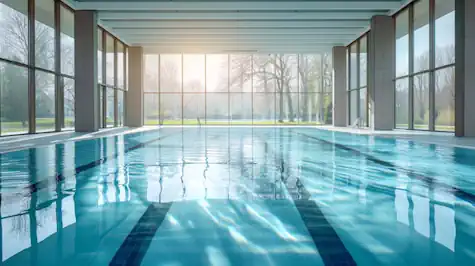
Technological Advances
From self-cleaning systems to advanced lighting that can change the pool’s ambiance with a touch, innovation in pool technology is redefining the luxury pool experience. Smart technology and automation allow for remote control of pool features, making maintenance a breeze for owners and operators.
Integrating Dynamic Systems
Pop-up water jets, floating robotic pool cleaners, and even underwater sound systems add dynamism to what could easily be a static feature. These systems offer both aesthetic and practical benefits, ensuring that the pool remains a highlight of the space it inhabits.
Promoting Your Architectural Pool Business
For designers and builders, creating these marvels is one aspect; promoting them to customers is another. Marketing strategies that engage the clientele are essential in a field where relationships and reputation drive the business.
Leveraging Platforms
Social media platforms offer an immersive way to showcase and discuss the grandeur of architectural pools. Drip-feeding content, behind-the-scenes glimpses, and client testimonials can build a powerful narrative.
Partnerships that Flourish
Collaborating with luxury home builders, architects, and interior designers not only expands your team of reach but also lends credibility that is invaluable in the high-stakes world of architectural pool design.
Conclusion
Architectural swimming pools are not mere containers of water but works of art that stimulate the senses and enhance human interaction with space. The luxury and lifestyle that these pools represent are the very core of their appeal—a promise of an experience that transcends utility. As we look to the future, the only certainty is that the boundaries of what a pool can be will continue to expand, pushing the water’s edge of architectural innovation.
With the rising tide of demand for unique pool designs, it’s an exciting time for those involved in the creation of these aquatic masterpieces. Whether you’re a designer seeking inspiration or a homeowner dreaming of such a pool, I encourage you to explore the boundless possibilities that lie at the confluence of water and architecture. And as we eagerly anticipate the next wave of pool design trends, keep your eyes on the horizon and your feet poolside. After all, to be at the edge of the water is to be at the beginning of creation.
Frequently Asked Questions (FAQ)
What is architectural swimming pool design?
Architectural swimming pool design refers to the creation of pools that not only serve as a place for swimming but are also meticulously designed to integrate with the surrounding landscape and architecture, enhancing the aesthetic and functional value of a property. Exterior and interior design options require thoughtful planning and careful integration into your living spaces.
How important is sustainability in pool design?
Sustainability is increasingly becoming a key consideration in architectural pool design. This includes the use of energy-efficient heating and filtration systems, water-saving features, and materials that have a lower environmental impact, to ensure that the pools are not only luxurious but also eco-friendly.
Can technology change the way pools are used and maintained?
Absolutely. Advances in pool technology, such as smart automation systems, self-cleaning features, and advanced lighting, have transformed both the utility and the enjoyment of pools. They allow for easier maintenance and the ability to change the ambiance of the pool with just the touch of a button.
How does the design and construction process work?
The design and construction of an architectural pool involve collaboration among architects, pool designers, landscape architects, and builders. It starts with a concept that goes through meticulous planning and design stages before the actual construction begins. Despite the challenges and complexities, the result is a beautifully integrated pool that complements its surroundings.
Are there different types of pools for different client needs?
Yes, clients’ needs vary greatly depending on their lifestyle, the property’s location, and personal preferences. Tailor-made designs cater to specific requirements, whether it’s a resort-style pool, a backyard lap pool for exercise, a therapeutic spa pool, or a show-stopping infinity pool that blends with the horizon.
What role does collaboration play in achieving a successful pool project?
Collaboration is crucial in the world of architectural pool design. Working closely with architects ensures that the pool design is in harmony with the overall architectural vision of the property. This synergy ensures that the pool adds to the visual and experiential quality of the space.
How do I start planning for an architectural pool?
The first step is to consult with a professional pool designer or architect who specializes in custom pools. They will help you explore the possibilities, taking into account your property, budget, and personal preferences, and guide you through the design and construction process.
How long does it take to design and build an architectural pool?
The timeline can vary significantly based on the complexity of the design, the size of the pool, and any challenges related to the site. On average, it can take several months to a year from the initial design phase to the completion of the construction.

